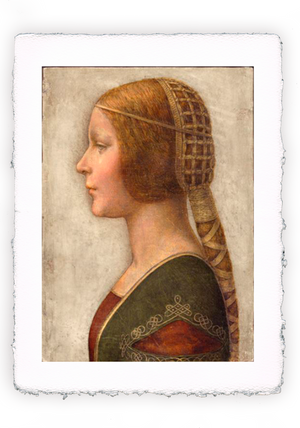
David Friedrich Caspar and the human condition.

A person's character is formed in the first years of life. The events he experiences in this period have a decisive influence on his future and on his way of participating in life.
This seems to be even more true when we consider the painter's youth David Friedrich Caspar, born in Greifswald on 5 September 1774.
It certainly could have been better
The son of an entrepreneur, a fervent Lutheran, he lost his mother when he was only 6 years old. The following year he loses his sister, but the event of greatest emotional impact occurs at the age of 13.
While skating happily with his brother Christoffer, the ice breaks; Caspar falls into the water and his brother runs to help him and manages to save him, but it is he who then sinks into the freezing waters and dies.
With these experiences we find the young Friedrich painting student at the University of Greinswald. His teacher Gottfried Quistorp used to take his pupils to paint outdoors and it was here that Caspar became passionate about nature. His friendships are also formed at the university, in particular that with the theologian Kosegarten from whom he learns that nature is a direct manifestation of God.
Storm and momentum
The whole environment is, however, imbued with the cultural movement "Sturm und Drang" (storm and impetus), born from the novel Wirrwarr (Chaos) by Maximilian Klinger, at the origin of German romanticism.
One of the aspects of this cultural trend sees religion as the passion of the infinite, an inexhaustible creative power, which stirs in the womb of Mother Nature and in the imagination of genius.
In 1798 Caspar settled in Dresden and began his business, dedicating himself to engravings and watercolors, which are less demanding than oil painting.
Easy to win
The turning point for Friedrich came a few years later, when he won first prize in Weimar, a competition wanted and chaired by Wolfgang Goethe. In reality, there are no competitors up to the situation and when Goethe sees Caspar's proposals he immediately rewards them, thus saving his initiative from mediocrity as well.
Having the appreciation of one of the greatest figures in European culture is tantamount to winning a pass to fame, and so it was.
The creation of a commission for an altarpiece by the Thun counts for their family chapel is emblematic.
Caspar realizes one of his masterpieces at the age of 34: "Cross in the mountains".
Where is the man?
Since it is an altarpiece, anyone is led to think of the Crucifix with the two crosses alongside, Madonna and apostles at the foot of the Cross and so on.
None of this. Caspar paints a rock, at dusk, with plants and fir trees that stand out on three beams of light that make us guess the sun, already low, behind the rock. In profile, and not even in the center, we see a pole that one senses may be a cross due to the small transverse protrusions and because a small man is hanging from it.
None of the three bundles is dedicated to this cross, it is simply there as there are trees, clouds and rock: nature is the protagonist.
As with any great artist, Caspar revolutionizes the iconography of the subject and highlights his poetics and his thinking.
Caspar writes: "Sublime is an indescribable sensation that occupies the sky but which can also be enclosed in a small flower."
Man does not exist or, rather, he is one of the many elements of nature. Not surprisingly, in all of Caspar's paintings the man is painted small and from behind, the face is rarely distinguished. Man is a spectator of the power and immanence of nature.
External - internal - external
Caspar's nature, however, is not realistic, it is not taken up and reproduced on the canvas, but in essence it is… invented. He always works in the studio, not outdoors.
Caspar writes again: "Close your physical eye, in order to see your painting with the eye of the spirit. Then bring to light what you saw in the dark, so that your vision acts on other beings from the outside to the inside. "
With this reasoning, however, Caspar brings the human being back to the center. The much magnified nature is not what you can see with your eyes, but a vision that comes from within, with your eyes closed.
Do we want to call it "soul", "unconscious"? It matters little. Nature, for Caspar, is then only a pretext to express that feeling, that mystical sensation that explains the meaning of existence: the landscape as a "place" of the soul.
Caspar's luck followed the trajectory of a meteor and passed the romantic "fashion" in its last twenty years declined without remedy.
Forced to live on the alms of friends, he was struck by a degenerative disease of the mind that gradually, but inexorably, led him to dementia with which he survived for 5 years. He died on May 7, 1840 at the age of 66.


Leave a comment